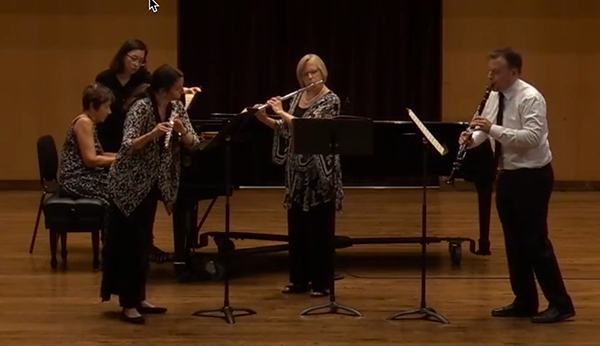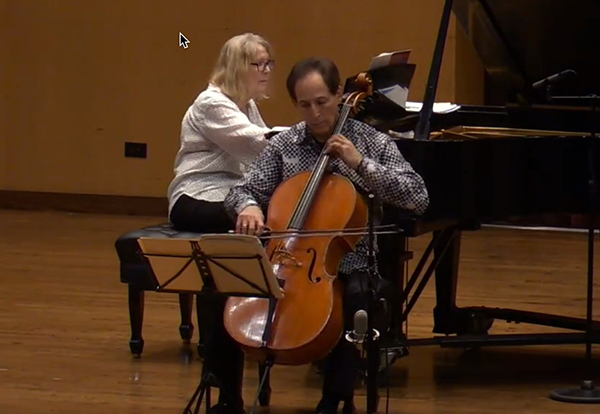by Nicholas Stevens

Jessica Sindell, soon to mark her first year as a member of the Orchestra, produced sounds ranging from crystalline high tones to wintry lows in Poulenc’s Sonata for flute and piano. Carolyn Gadiel Warner, a member of both the keyboard and violin sections, balanced right-hand brightness with subtle voicing in the left. Respecting Poulenc’s characteristic restraint, the duo allowed glimpses of darkness in the second movement without needless gravitas.

Fink and Sindell likewise made the most of Nicolas Roussakis’s Six Pieces for Two Flutes. Kaleidoscopic swirling, convergence, interweaving, unexpected resolution: the composition offers inspired gestures in each movement. The duo played with clear intention and expressive power, and left the audience warmly applauding a work of uncompromising modernism.
Martinů’s Scherzo for flute and piano took on new nuance in Fink’s arrangement for piccolo. Audiences seldom have the opportunity to hear a first-rate player plumb the depths or ply the middle range of the instrument, yet there was Fink, making sounds spanning from the quality of a passerby whistling to that of a trumpet player producing muted murmurs.
The flutists’ portion of the program ended with Henri Kling’s Two Little Finches, which Fink introduced as the “dessert” of the set. Light as whipped cream and made more comic by Sindell’s walk-on entrance, the performance put concert-hall artistry in service to the charming theatrics of a summertime bandstand.

Gaspar Cassadó’s Requiebros alternated severity with sensuality to compelling effect in Weiss’ and Jones’s clean, tight reading. Le Grand Tango gave Jones plenty to work with, its alternately lumbering and thrashing rhythms vital under her hands, but it also showcased Weiss’s unique sound. In his interpretations, each note has a clear beginning, middle, and end, and phrases feel either expertly connected or artfully fragmentary. Words can barely capture the magic of the abrupt yet definitive ending as this duo rendered it.
Jones, who sparkled as a soloist in the Orchestra’s memorial tribute to Pierre Boulez back in 2015, clearly knows the French piano repertoire backward and forward. This became clear in the duo’s performance of Ravel’s Pièce en forme de habanera, modern in its strange, glittering clarity. The concert ended with Pizzolla’s Libertango, which astonished from Jones’s theatrical count-off to her and Weiss’s sudden, gripping acceleration to the end.
Published on ClevelandClassical.com July 23, 2019.
Click here for a printable copy of this article



